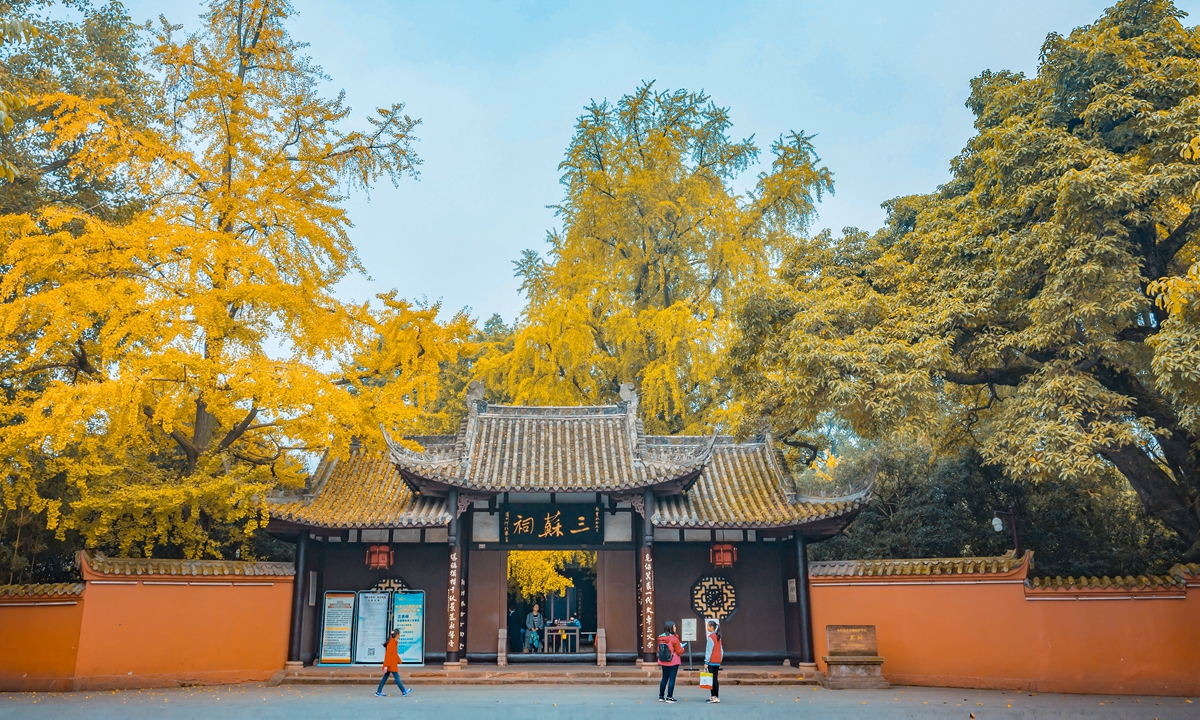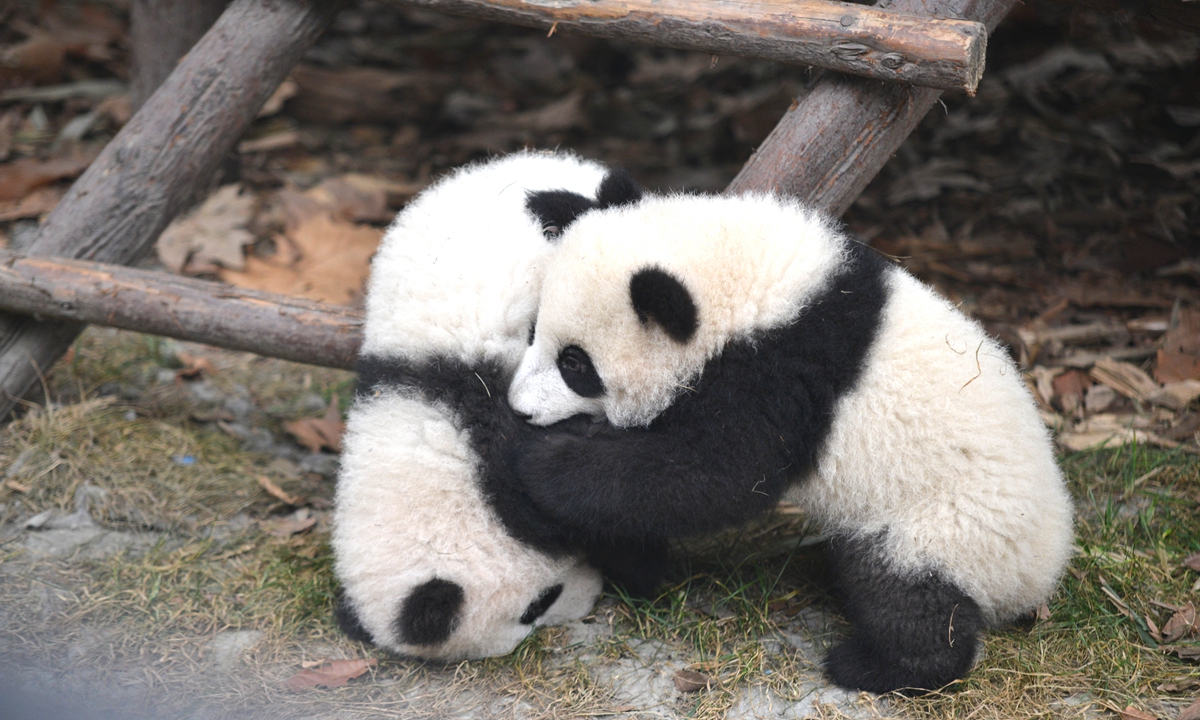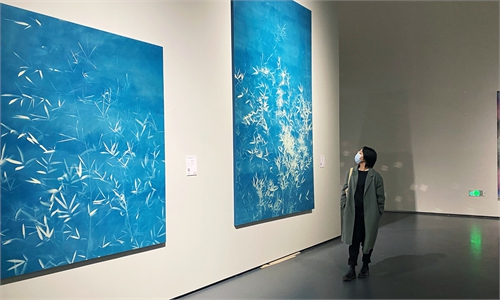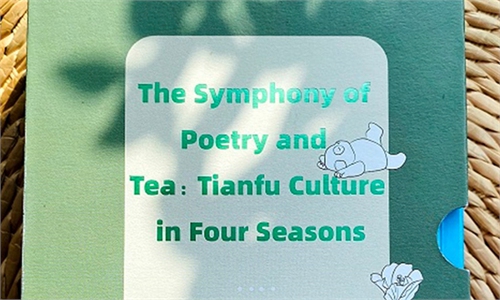ARTS / BOOKS
Exploring China’s ancient Bashu culture accompanied by renowned poets
Spirit of a region

San Su Ci Photo: VCG

Chinese giant pandas in Southwest China's Sichuan Province Photo: VCG
Editor's Note:Southwest China's Sichuan Province and Chongqing Municipality recently released a joint project aimed at boosting regional tourism with supporting policies, including a 144-hour visa-exemption transit program. Foreign travelers from 53 countries with valid international travel documents and an interline ticket with confirmed date and seat to a third country (region) can spend 144 hours traveling around the region of Sichuan and Chongqing. This region is well known to the world because of its natural scenery and long-lasting cultural heritage and traditions.
Chinese President Xi Jinping on Wednesday inspected the city of Meishan in Sichuan and visited the village of Yongfeng and the San Su Ci.
Here the Global Times will follow the steps of China's top leader so that readers can appreciate the beauty of Sichuan and Chongqing, learn about the long history of the region's Bashu culture as well as its modern sites including places for fashionistas like Chunxi Road and Tai Koo Li in Chengdu.
Located on the upper reaches of the Yangtze River, the Bashu region, centered on Sichuan Province and Chongqing Municipality, is considered one of the cradles of Chinese civilization. It once gave birth to the famous Bashu culture, which is represented by the stunning archaeological discoveries of the Jinsha Ruins and Sanxingdui Ruins.
With a history that stretches back more than 3,000 years, the Bashu region has always enjoyed a laudatory title of "Nature's Storehouse," as it is rich in cultural and natural resources, and the hometown of China's national symbol the giant panda.
Home to more than 30 percent of the world's giant pandas, the Sichuan Giant Panda Sanctuaries are among the most important sites for the captive breeding of these cuddly animals.
As one of the most popular tourist destinations in China, Sichuan Province received 755 million domestic and foreign tourists and brought in a total tourism revenue of about 1.16 trillion yuan ($174 billion) in 2019. That same year, Chongqing Municipality received 657 million domestic and foreign tourists and reached a total tourism revenue of about 573.9 billion yuan.
The Bashu region has 21 national 5A-level tourist attractions and five national-level tourist resorts, among which the San Su Ci and Du Fu Thatched Cottage show a distinctive taste of Bashu's poetry culture.
San Su Ci
The San Su Ci, or the Three-Su Temple, once the home of three literary masters - Su Xun and his two sons Su Shi and Su Zhe - is located in Meishan, a city in Sichuan Province. It is now a memorial temple as well as a national museum for tourists to explore the legendary and vigorous life of these great poets, as well as their life-long achievements.
Among the three literary masters, the poet Su Shi is especially famous for his splendid poems, and the famous dish named after him.
The tasty dish known as Dongpo pork is named after the poet. In 1089, Su Shi, also widely known by his pen name Su Dongpo, was working as an official in Hangzhou, East China's Zhejiang. During his time there, he led farmers to dredge the blocked West Lake and improved agricultural production. To express their gratitude, locals cooked for him his favorite pork dish and named it after him.
Experts say the San Su Ci is not only a memorial temple commemorating this family, but also a carrier of the culinary and poetic spirit of the Song Dynasty (960-1279), making it a representative of Bashu culture.
"Su Shi is more than a poet, rather, he is a symbol raised by the Yangtze River-based Bashu culture," He Yun'ao, a history professor at Nanjing University, noted.
"It is a place with a stable but vigorous environment that is an excellent place for writers and painters. The romanticism here cultivated a spiritual world, which has contributed to the great development of literature and art."
Du Fu Thatched Cottage
The Du Fu Thatched Cottage in Chengdu, Sichuan Province is a national-level cultural relic conservation site dedicated to the great Tang Dynasty (618-907) literati Du Fu. Once the residence of this great poet, it stood witness to the trials and tribulations he experienced during what was probably the lowest point of his life.
During the late period of the An Lushan Rebellion - a political upheaval during the Tang Dynasty - Du Fu traveled as a vagabond from today's Gansu Province to Chengdu to flee the war. The painful experience gave the literati an in-depth and tenacious view of life that he depicted in his extremely socially conscious writings and poems.
During the four years he lived in the thatched cottage, the poet wrote more than 240 poems, many of which still inspire people today.
Jiang Yufang, an expert on Du Fu, told the Global Times that the place is an embodiment of the poet's spirit of "loyalty to his beliefs" and "courage in the face of adversity."
This spirit is universally admired by people in both Chinese and Western cultures. In 2021, BBC in the UK produced the documentary Du Fu: China's Greatest Poet to follow the Chinese poet's journey in Chengdu.
"Du Fu's power is that he gives a universal answer to the question of how we can act when facing bipolar life choices and how we can adhere to the good despite pain," Jiang said.




